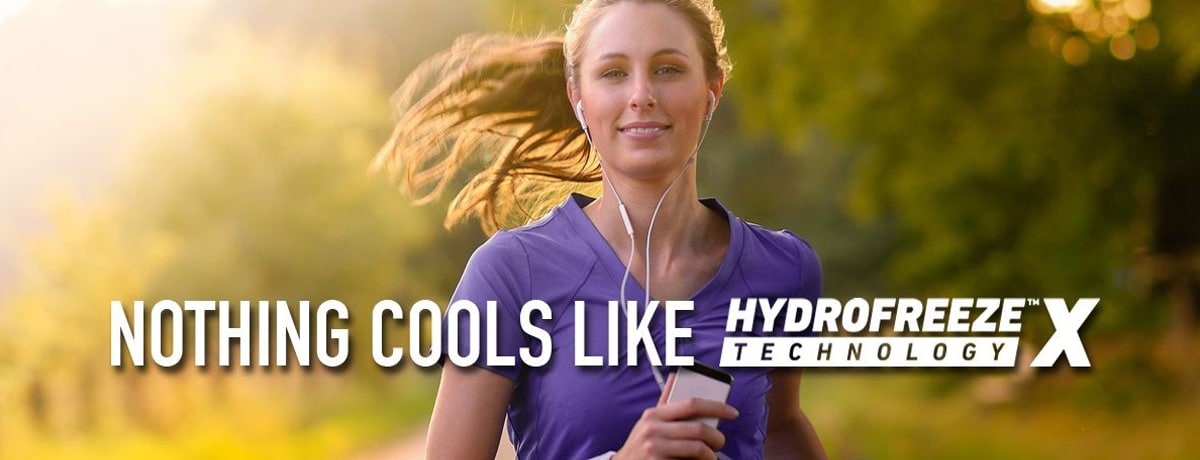
Control Temperature | Unlock Performance
What types of barriers do you encounter during a tough workout? Strangely enough, when it comes to physical exercise, it’s all in the head. We often experience mental roadblocks that tell us we’re not strong enough, not fast enough, and not good enough. This is why it feels so good when we push through and discover that we are, in fact, stronger, faster, and even better than we thought. So how would it feel to be able to take charge of some of those things? For instance, how great would it feel to be able to control temperature? When you’re working out, you have so many internal barriers to overcome that the last thing you want to deal with is some kind of physical limitation. Ask any athlete who’s ever been injured and they’ll tell you how frustrating it can be to want to perform, but simply can’t because you’re not physically able to. No one wants to be told they can’t do something. Many mammals have developed sweat glands as a means of thermoregulation, meaning they can control their body heat naturally when it’s too hot out or they’re exercising. Humans, however, have evolved to have more sweat glands than say, a dog does. When it comes to long distance running, no other animal on earth can outrun a human. We simply don’t overheat as fast as other animals, because we sweat more. Our ability to perspire does have its limits though, and only through technology are we able to break these limits. If you’ve ever encountered the problem of getting too hot when you exercise, you know the struggle. Whether it’s stifling heat, or a long and intense workout that gets your blood pumping, getting too warm during a workout can pose serious problems for you. In fact, you can truly hurt yourself if you’re not careful. The Risks of Getting Too Hot Aside from the unbearable feeling of being too hot, when your body temperature rises above a certain point you can put your health in danger. At that point, you might experience a number of different issues, all of which belong under the category of hyperthermia. Hyperthermia may include:
- Heat syncope. This is an onset of dizziness or even fainting that occurs in earlier stages of heat exposure. This can also manifest itself in a minor way of making you feel faint or abnormally tired and “out of it”. Essentially, you lack adequate blood supply to the brain, making you feel weak, and risking passing out. Other symptoms besides weakness, include tunnel vision, pale skin, or a weak pulse. The most effective way to deal with heat syncope is to stop exerting yourself and to rest in a cool place while drinking water until the dizzy feeling goes away.
- Heat cramps. Have you ever woken up in the middle of the night with a sharp pain in your calf? This is the same type of problem you can encounter in other muscles if you’re exposed to heat for too long while exercising. These muscle spasms typically last longer than the nighttime cramps just mentioned, though, and they can happen in your arms, stomach, and back. If you’re battling heat cramps, the best thing you can do is rest, hydrate, and stretch out the affected area.
- Heat edema. While it’s pretty common for your feet and ankles to swell a little when you’ve been standing in one position for too long, a heat edema occurs when you’re active in a hot environment. As you’re working out, your high temperature can cause your blood vessels to dilate so body fluid moves into the hands or legs by gravity. The best thing to handle the swelling is to elevate the affected area.
- Heat exhaustion. This is your body telling you that it can’t work anymore and is trying to keep itself cool. You might experience weakness, dizziness, nausea, headache, a fast heartbeat, and dark-colored urine (a sign of dehydration). If you experience this, it’s vital that you get to a cool place as quickly as possible. Drink water or some kind of beverage with electrolytes, remove excess clothing, and you can even hop in for a cool shower or bath to help lower your body temperature back to a normal state.
- Heat stroke. If heat exhaustion goes untreated, then you could be at risk for heat stroke. This is when the temperature of your body raises to over 104° and it can no longer keep itself cool. Symptoms not only include a high fever, but severe headache, dizziness, a red appearance to the skin, a lack of sweating, muscle weakness, nausea, vomiting, a fast heartbeat, panting, disorientation, and even seizures. Since heat stroke can damage your heart and your brain, call 911 immediately if you see anyone experiencing these symptoms.



